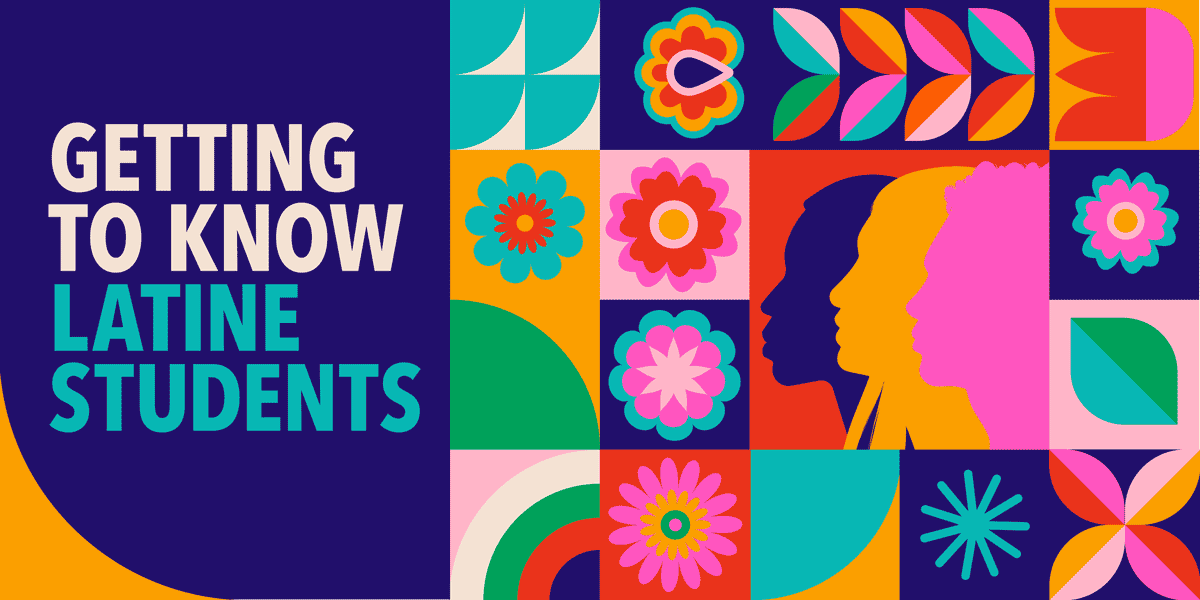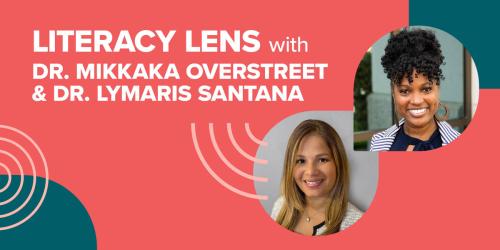Latine Heritage Month 2024: Getting to Know Latine Students

Hispanics and Latinos in the United States comprise a rich and diverse population. Although this population is often grouped under one label, their origins, cultures, languages, dialects, and migration experiences differ greatly. In addition, recent shifts in immigration patterns have increased diversity among U.S. Latinos, although the majority identify as Mexican, Puerto Rican, Salvadoran, Dominican, and Cuban.
In U.S. public schools, 29 percent of pre-K–12 students identified as Latine in 2022—a percentage that has nearly doubled since the 1990s.
The Latine population is much more than a statistic. To truly understand Latine students, educators need to go beyond holidays and food and get to know students and their culture.
Honoring Culture, Language, Perspectives, and Stories
Acknowledging culture is foundational to understanding Latine students. Culture is a dynamic interaction of people’s histories, perspectives, social interactions, and experiences that cannot be distilled into monolithic generalizations.
To ensure equitable access to learning, educators must really see Latine students and value all the assets they bring from their culture to the classroom. When students’ cultures and experiences are honored in school and their identities are reflected in instruction, students feel included and connected to learning and to educators who advocate for their success. Regardless of grade level or content area, when teachers incorporate meaningful, relevant, and connected learning experiences, they create a learning environment that works for Latine students.
For example, one cultural practice that unites Latine communities is their rich oral traditions—generations have used storytelling to pass their histories, cultures, and knowledge to their families and children. Stories are a powerful way to share values and build emotional and intellectual bonds, maintaining strong connections to the past while navigating the complex issues of society today. Educators can acknowledge the importance of this cultural practice for Latine students by incorporating stories and storytelling into instruction. Other important cultural assets for educators to consider include language, ways of knowing, ways of teaching and learning, values, and beliefs.
Stories are a powerful way to share values and build emotional and intellectual bonds, maintaining strong connections to the past while navigating the complex issues of society today.
Building Relationships for Culturally Responsive Learning
Educators can learn about the cultures of their Latine students’ by building relationships with students and their families. Positive relationships with Latine students and their families are key to culturally responsive and affirming school environments. Getting to know students and connecting instruction to their lives supports their development and learning. Students thrive in communities where all adults hold high expectations for their growth and have asset-based mindsets about their social and academic journey.
Educators can build positive relationships with Latine students by learning about their lived experiences, backgrounds, and interests. Specific teacher actions to build authentic relationships include:
- Talk with students about events in their lives and share your own experiences
- Ask about student interests through surveys, conversations, or interest interviews, then build student interests into lesson experiences
- Provide specific and genuine feedback on academic work and progress
- Celebrate student learning growth and academic successes
Call to Action: Get to Know Your Latine Students
This Latine Heritage Month, we call on educators at all levels to get to know their Latine students—their cultures, their backgrounds, their experiences, and their families. With this understanding, educators can build authentic, trusting relationships to support learning.
Below we offer a few specific strategies for starting to build those foundational relationships and create the conditions for Latine students to thrive.
Get Students’ Names Right
Using student names—and pronouncing them properly—can help Latine students feel welcome and comfortable in the classroom. Here are a few helpful resources for getting students’ names right:
- Getting It Right: Reference Guides for Registering Students with Non-English Names
- Making Name Pronunciation a Priority in K12 Education
Be Intentional as You Get to Know Latine Students
Listen for and show curiosity about Latine students’ culture, perspectives, and families. Avoid making assumptions about Latine students’ languages, cultures, backgrounds, and histories. For example, Latine students may speak Spanish, Indigenous languages, only English, or several languages.
Create Opportunities for Students to Share Their Experiences and Family Stories
As noted above, weaving storytelling into teaching is a culturally responsive practice. Honor students’ stories by giving them opportunities to share about themselves, for example, creating “all about me” posters, sharing stories from a student of the week, or using home/school journals that involve parents and extended family.
Draw from Latine Students’ Funds of Knowledge
Funds of knowledge are the knowledge, life experiences, social skills, and perspectives students bring to the classroom. Design learning that connects with Latine students’ assets and celebrates their racial, cultural, gender, or linguistic identities. Connect to students’ expertise and competency and draw from their social and cultural backgrounds. Allow students to demonstrate learning in multiple ways. For multilingual students, this could involve offering opportunities for students to choose their home language for processing learning and negotiating meaning.
Get to Know Latine Students’ Families
Connect with families at the start of the year by holding meet-and-greets or drop-ins before school starts or asking families to complete a questionnaire or interview with their child. Maintain relationships throughout the year with conferences, phone calls, or “lunch bunch” meetings (lunch with the teacher in small groups).
Promote Latine Youth Leadership and Voice
Giving students a say in their learning environment builds community and cultivates emotional and social development. Advocate for student involvement and voice in school decision making, and give students a say in their learning space. (This can happen as early as elementary grades!) Educators can also help diversify participation in school activities and leadership opportunities (like Latino Leadership Northwest) to develop and elevate Latine students’ abilities.
Build School- and Districtwide Structures to Systemically Support Latine Students
Connect with grade-level teams below and above your grade to understand where students have been and where they are going. District and school administrators can refer to Oregon’s Transformative Social and Emotional Learning Framework and Standards for ideas to honor and leverage students’ lived experiences and provide developmentally and culturally responsive instruction.
Jennifer Johnson has worked in public education for over 23 years, with a focus on supporting diverse multilingual populations in underserved schools. Before joining Education Northwest, she was a dual language teacher, bilingual instructional coach, building principal, district-level multilingual director, state dual language task force member, and WIDA professional development trainer.
Kelli Scardina developed her expertise in serving multilingual learners over 30 years as a bilingual and bicultural pre-K–12 educator, leader, professional learning facilitator, curriculum designer, and program developer. She is passionate about working alongside students and their families to help them build on the assets they bring to meet their academic, social-emotional, and familial needs.



